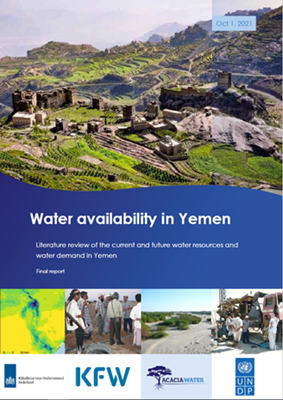Review of Yemen’s water resources
Declining groundwater levels ranging between 3-7 metres per year in critical basins, an estimated annual water shortage of 1.4 billion cubic metres and an annual per capita water availability of only 85 cubic metres. These are some of the distressing findings of our study on water availability in Yemen, funded by KfW (https://www.kfw-entwicklungsbank.de/International-financing/KfW-Entwicklungsbank/) and conducted on behalf of UNDP (https://www.undp.org/) trough RVO (https://www.rvo.nl/).
In the past few months Acacia Water analysed over 240 reports to develop a substantiated view on Yemen’s water resources, with an in-depth focus on water balance estimates in three wadi areas in Abyan, Hadhramaut and Dhamar Governorate. Supported by remote sensing and satellite data analyses, the study points out that there is insufficient water available to adequately serve all present water demand functions, causing an imbalance which is currently bridged by excessive groundwater abstraction. At the same time, annual renewable water resources are potentially sufficient to meet the drinking water demand.
The situation in Yemen calls for collective action and an integrated catchment and community-based approach to curb trends of diminishing water reserves and strengthen water resources management, which has been opted for in a joint session headed by UNDP and KfW today. As a starting point, the study supports this by presenting a long-list of short-, mid- and long-term options and opportunities to further deepen analyses, adopt IWRM at various levels and unlock unused water resource potential.
Interested to read the report? Send a message to our colleague Simon van Meijeren (mailto:simon.vanmeijeren@acaciawater.com)
 Yemen_front_page
Yemen_front_page